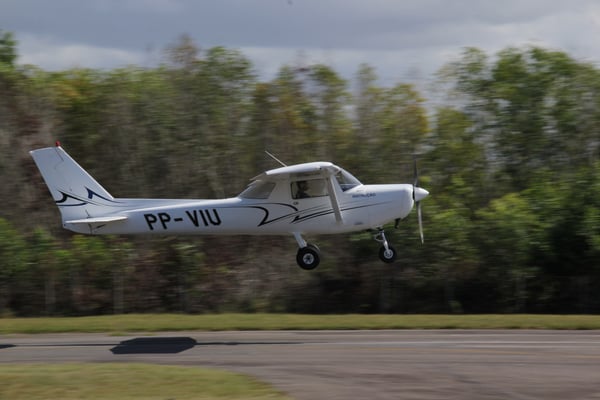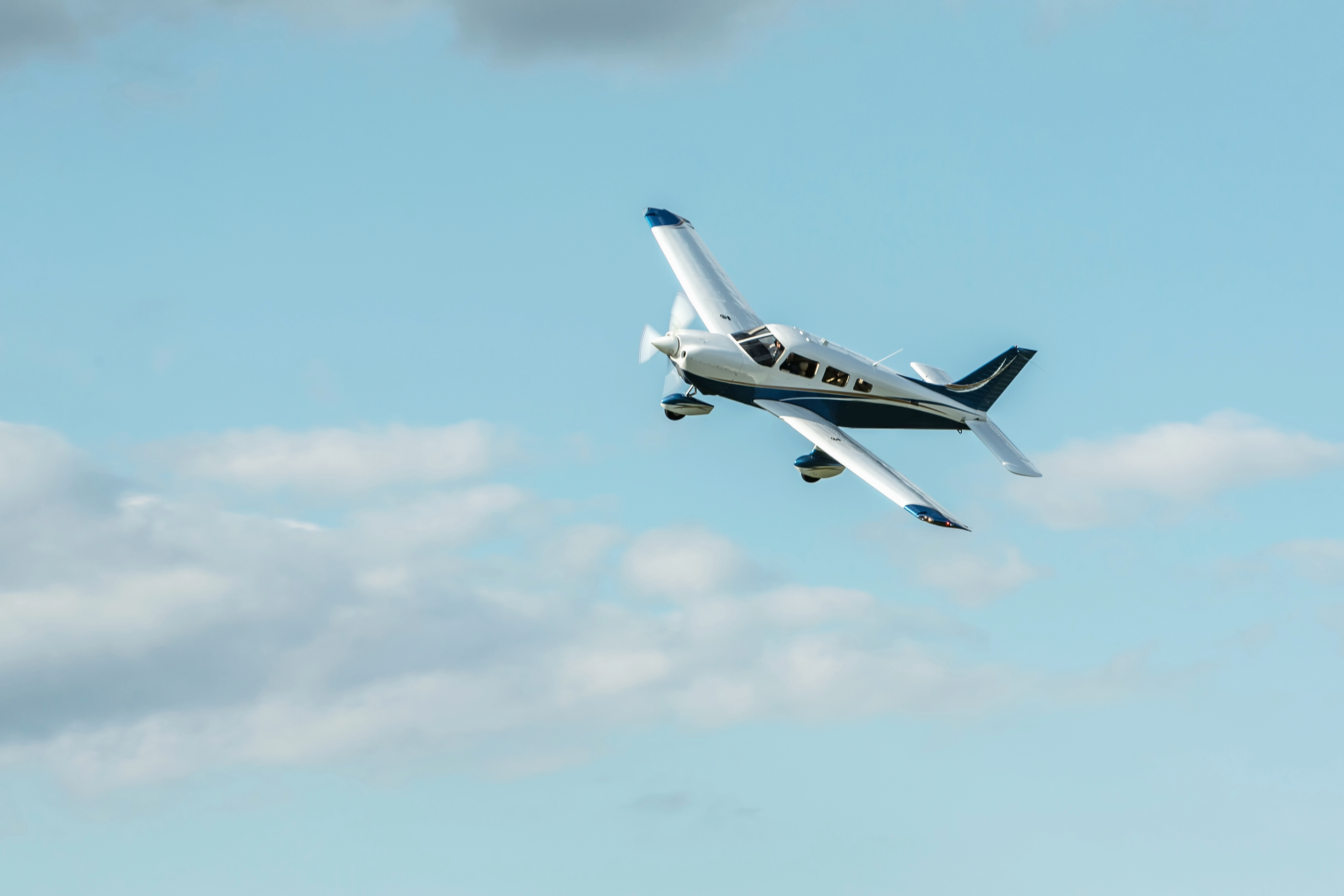5 VFR Takeoff and Landing Procedures To Keep Your Skills Sharp
For an instrument-rated pilot, it can be easy to get lulled into the relative standardization of an instrument flight rules (IFR) flight plan. While the extensive sets of rules under IFR vastly increase the different weather conditions in which a pilot can operate, both instrument-rated and visual flight rules (VFR) pilots need to maintain proficiency in the basics.
Regardless of the type of flight plan, a takeoff and landing will be a part of every flight. A few basic training tasks can help ensure these procedures remain practiced and proficient no matter your level of certification.
Go/No-Go Decisions on Takeoff
Whether departing in reduced visibility or on a beautiful clear day, many factors can affect whether the takeoff should be attempted or continued. As an instrument-rated pilot (or one in instrument training), it is easy to focus on the after-takeoff procedures and how you are heading into the controlled airspace system rather than the takeoff itself.
When it comes to the takeoff decision, consider the performance of your aircraft for takeoff, especially on shorter runways. While many private pilots have charts showing takeoff performance (ground roll and total distance to clear an obstacle), there is no requirement for single-engine aircraft to have charts showing what multi-engine-rated pilots know as “accelerate stop distance" — which is the distance to accelerate to takeoff speed, then reject the takeoff and come to a complete stop on the runway.
Pay attention to what the acceleration needed for a normal takeoff feels like, while also understanding the effects of hotter weather or higher elevation on the performance of your particular airplane. You should know what normal indications to expect from your airplane on takeoff as well. When checking engine instruments after applying takeoff power, be sure you are familiar with what you should see. While some parameters might be simple (such as requiring an indication to be “in the green”), others may be as specific as requiring engine or propeller RPM to be within a narrow range once takeoff power is applied.
A rejected takeoff at high speed is substantially more risky than a low-speed one. Thus, a quick scan early on can identify issues and allow you to abort with minimal risk.
You may be able to handle some things safely in the air, such as a door opening shortly before rotation. This might make for a noisy affair in light aircraft, but it can be resolved with a quick trip around the pattern or an in-flight closing procedure if your pilot’s operating handbook (POH) includes one. Familiarity with the particulars of your airplane is key.
Bear in mind that most light general aviation aircraft use basic braking systems with no anti-skid equipment. Therefore, a quick application of the brakes during an aborted takeoff (especially at high speed with minimal weight on the wheels) can easily cause tire lock up or skidding, possibly damaging the tires.
No matter the cause, once you have safely stopped the airplane, consider whether you can re-attempt the takeoff or whether you need to resolve the issue on the ground.
Related Content: What the Average Pilot Looks Like and Why You Shouldn't Settle
 A Cessna 152 takes off from an airport in Brazil. Photo courtesy of João Lopes.
A Cessna 152 takes off from an airport in Brazil. Photo courtesy of João Lopes.
Short-Field Takeoffs and Landings
Most airports hosting instrument procedures tend to have longer runways with the vicinity well clear of obstacles. One of the skills that can quickly atrophy in this environment is maximum performance short-field takeoffs and landings. For an IFR pilot looking to get some short-field practice, whether alone or with a certified flight instructor (CFI), a great place to start is with a review of slow flight.
Gaining proficiency in slow flight along with the changes in control forces and authority near the stall is good preparation for short-field work. Remember to look over the appropriate short-field configurations and speeds for your aircraft and utilize all the available runway.
- For takeoff, ensure you line up at the very end of the runway and avoid the temptation to lift off too quickly or target an improper airspeed during the initial climb.
- On landing, proper airspeed control and selection of an aiming point will allow you to prevent floating and maximize the distance available for stopping.
Keep in mind that obstacles around short or confined runways may cause wind variations and sudden changes in airspeed as you climb above or sink below them. Make sure you have reviewed the go-around procedures for your airplane, and do not be afraid to execute them whenever needed.
Crosswind Landings
Though some of the most challenging instrument conditions can come on days with calm winds, an IFR pilot should still maintain proficiency in crosswind landings. At a minimum, you should maintain proficiency in two primary techniques pilots use during a crosswind approach and landing.
Crab Technique
In the crab technique, the pilot offsets the nose of the airplane by ‘crabbing’ into the wind, allowing the airplane to track the centerline. This technique requires good perception by the pilot during the approach with precise timing as the aircraft enters the flare and the pilot applies rudder and aileron (as needed) to straighten the nose and touch down.
Since the aircraft remains coordinated, the crab technique is generally more comfortable for passengers. It is used almost universally at the professional pilot level.
Wing-Low Technique
Most pilots learn the wing-low technique early in their flight training. By applying the appropriate rudder inputs to align with the runway and aileron into the wind to maintain a straight track over the ground, the pilot can fly a less complicated approach by avoiding significant changes shortly before touchdown. The wing-low technique is used frequently in general aviation, particularly in tailwheel- or float-equipped aircraft.
Regardless of your technique of choice (or combination of the two), you should maintain familiarity with both, as well as know your personal crosswind limits. A go-around and diversion to another runway or airport are safer than testing the limits of your skills.
Night Landings
Whether departing early in the morning or arriving late at night, night flying adds another set of complexities both for pilots who operate under IFR and VFR. The Aeronautical Information Manual, or AIM, has an entire chapter devoted to aeronautical lighting and other visual aids that is worthy of review, especially if you are based at a smaller airport and headed to a major one (or vice versa). Another good area to review is the various night-flying illusions your brain can experience, such as those found in chapter 17 of the Pilot’s Handbook of Aeronautical Knowledge.
Keeping a disciplined instrument scan is critical, utilizing your instruments to monitor your altitude, speed, and glide path as appropriate. However, you should ensure you are only referencing them rather than focusing on them to the point of abandoning your visual scan outside.
Related Content: 3 Ways to Improve Your Night Flying
Emergency Approaches and Landings
Finally, be sure to maintain proficiency in emergency operations. Systems failures such as engines or avionics are not confined to certain weather conditions. Therefore, as pilots, we must be ready for an emergency or abnormal situation to arise anytime.
Flying in instrument conditions may leave you little time to prepare for landing after descending below the ceiling. If you were to experience an engine failure and finally descend below the clouds at 1,000 feet AGL, you could have a minute or less to observe the winds, choose your landing area, scan for obstacles, and maneuver for landing. Good energy management is critical to a successful outcome during an emergency landing.
If the failure is minor enough, you can divert to an airport. Remember, you have numerous resources available, such as air traffic control, to assist you in getting on the ground quickly and safely. You always have the option to declare an emergency if you feel it is needed, ensuring you get priority handling.
A simulated emergency with a CFI at altitude, transitioning from simulated instrument operations to flying a VFR approach and landing, can help brush off the dust and prepare you for any issues that may arise.
Bringing It All Together
Regular practice of takeoffs and landings is valuable no matter your level of experience. An airline pilot disconnecting all automation for a “raw data” approach, a floatplane pilot practicing for water conditions they don’t regularly see, and an instrument pilot taking a VFR day to practice the takeoffs and landings outlined in this article all must ensure they maintain a safe and proficient level of manual flying.
Whether you make laps in the pattern by yourself, with a friend, or with an instructor, regular review of the book knowledge and physical skills needed for different types of takeoffs and landings puts action to the words “practice makes perfect.”
Share this
You May Also Like
These Related Articles
.png)
When VFR Is Not VFR

How Circling Approaches Go Wrong
-1.jpg)